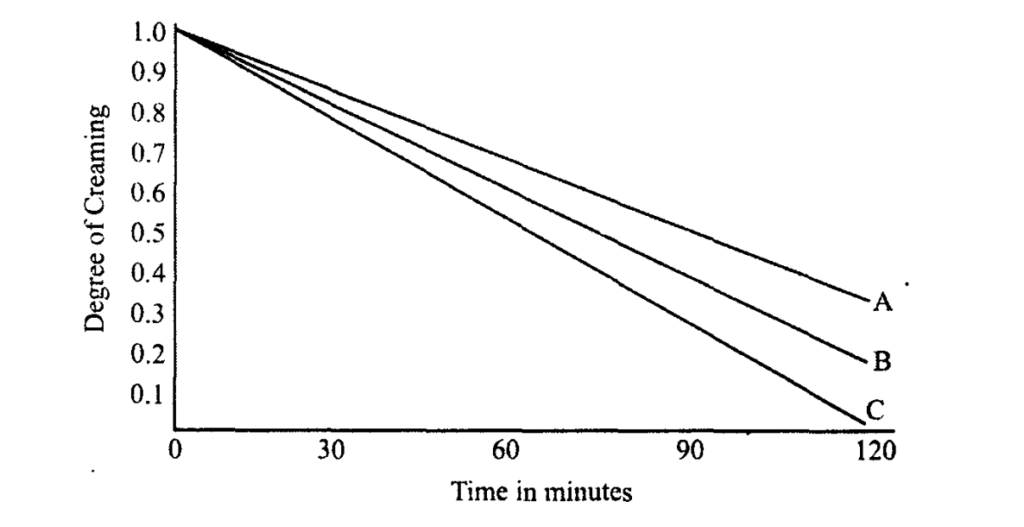Aim: To assess the physical stability of benzyl benzoate lotion (an emulsion for external use).
Principle: The physical stability of the emulsion is important to keep the dispersion intact. A stable emulsion is one in which the dispersed globules retain their initial character and remain uniformly distributed throughout the continuous phase. The unstable conditions in emulsions are creaming, coalescence, cracking or breaking, and phase inversion.
The physical stability of an emulsion can be assessed by an examination of the degree of creaming or coalescence occurring over a period of time. The ratio of the volume of the creamed part of an emulsion to the total volume is the required indicator. The globule size analysis can also be used to assess stability.
Materials and apparatus required: Benzyl benzoate, tri ethanol amine, oleic acid, water, beaker/conical flask, bottle.
Procedure:
Preparation of emulsion (benzyl benzoate lotion)
(At least 3 emulsions are to be prepared using the same formula and in the laboratory, data from other students can be used)
Formula for benzyl benzoate lotion:
| Benzyl benzoate | 25ml |
| Triethanol amine | 0.5g |
| Oleic acid | 2g |
| Water | 75ml |
| To make around 100ml. |
(The density of tri ethanol amine is 1.12 g/ml and that of oleic acid is 0.895 g/ml. This can be used to convert weight into volume)
- Triethanol amine is mixed with oleic acid. Benzyl benzoate is added and mixed.
- The mixture is transferred to a bottle of around 200 ml capacity (double the volume required to prepare).
- 25 ml water is added and the mixture is thoroughly shaken.
- The remaining 50 ml water is added and shaken thoroughly.
The extent of creaming:
- The prepared emulsion is transferred to a 100 ml measuring cylinder.
- The emulsion is left undisturbed in the cylinder and the volume of cream developed is noted over time from 0 to 2 hours at a frequency of every 30 minutes (as the normal period of the practical class is around 3 hrs).
- The graph is plotted to take the degree of creaming in the Y-axis and time in the X-axis.
Observation and Calculation:
| Number of Observation | Time in minutes | The volume of cream in ml | Degree of creaming (Volume of cream / Total volume of emulsion |
| 1. | 0 | ||
| 2. | 30 | ||
| 3. | 60 | ||
| 4. | 90 | ||
| 5. | 120 |
Report: The creaming instability of emulsions is observed in the following order: >_______ >________

Make sure you also check our other amazing Article on: Physical Stability of Suspension
